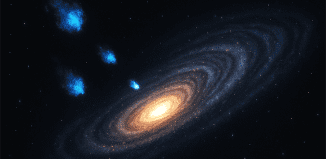Welcome to the family, Homo naledi
By Elof Carlson
In 2013, South African cave explorers were told of a chamber with what looked like human bones in the Rising Star Cave system in South Africa. The Sotho language uses “naledi” for its word for a star. When a preliminary examination of some of the bones revealed this was a new species of humans, the formal species name naledi was attached to the genus name to give us Homo naledi.
Over the next two years, three areas within the chamber were excavated, yielding 1,413 bones or bone fragments, 137 isolated teeth, and 53 jawbones with teeth. They belong to 15 different individuals, all of the same species, H. naledi.
Their brain size is about that of human ancestors who lived two to four million years ago. Their hands and feet are more human-like than ape-like. Their teeth are remarkably human-like. Their torso, shoulders and pelvis, however, are chimpanzee-like. They were small (four to five feet tall) and, most remarkably, they set aside their dead in a special chamber in the cave. Until this find, no other animal but our own species, Homo sapiens, has been known to provide a special resting place for the dead.
The digging will continue over the next few years, and many more (perhaps dozens) of fossil members of this species will be uncovered and analyzed. It is rare to have human fossils in such abundance. Where these humans fit in the many branched human, ape and monkey family tree will be worked out as these bones are studied by paleontologists and anthropologists in the years to come.
I look forward to the associated findings that will be explored in the cave and in a careful study of the many bones available.
For those who like the scientific description of a human, we are of the order Primates, the suborder Anthropoides, the superfamily Hominoidea, the family Hominidae, the tribe Hominini, the genus Homo and the species sapiens. Replace that last word with naledi and you see how close we are despite being separated, in all likelihood, by some two to four million years.
It has been satisfying to see the many new fossil humans, apes and related ancestors over the four generations I have lived and to reflect on how the ancestral connections are emerging. It is a story that will continue with more surprises as paleontologists continue exploring the places where humans have resided in the distant past.
Pessimists will see the extinction of humans from natural catastrophes, from human neglect of the world we live in or from alien or supernatural invasion. But four million years have passed and yet another connection to that past is revealed. If the average species runs about two million years, our species, Homo sapiens, has a long way to go before it is just a fossil memory.
Elof Axel Carlson is a distinguished teaching professor emeritus in the Department of Biochemistry and Cell Biology at Stony Brook University.






